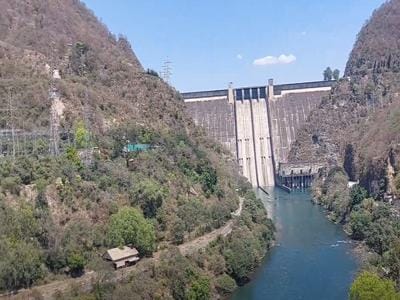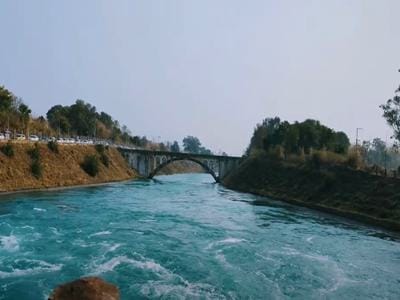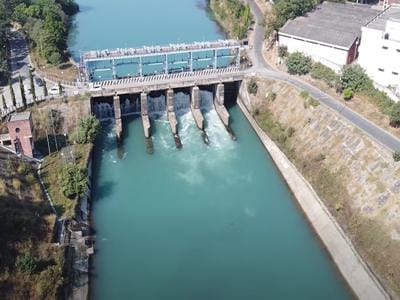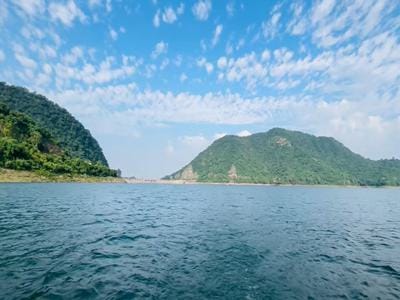Bhakra Nangal Dam – Tourist Places & Top Things to Do in 2025

Bhakra Nangal, Himachal Pradesh – A Complete Travel and Heritage Guide
Bhakra Nangal Dam, often referred to as the Bhakra Nangal Bandh, stands as a symbol of India’s engineering excellence and vision of self-reliance. Located in the beautiful hills of Himachal Pradesh, this mighty dam built across the Sutlej River is not just a lifeline for irrigation and power generation but also a significant tourist attraction. One of the highest gravity dams in India, Bhakra Nangal Dam showcases a blend of nature’s beauty and human brilliance. In this detailed guide, we cover its history, attractions, and everything you need to know for your visit.
The Bhakra Nangal Dam is situated at the border of Himachal Pradesh and Punjab, near the towns of Nangal and Bilaspur. Built on the Sutlej River, it was constructed to meet multiple objectives irrigation, hydropower generation, and flood control. With a height of 226 meters, it ranks among the highest gravity dams in India.
Apart from its utility, the dam is an iconic site that attracts thousands of tourists each year. The vast Gobind Sagar Lake, formed by the dam’s reservoir, adds to the scenic charm, making it a sought-after destination for nature lovers and engineering enthusiasts.
Bhakra Nangal Dam History and Construction
The story of Bhakra Nangal Dam history dates back to the post-independence era. The construction began in 1948, and the dam was completed in stages, with its inauguration by Pandit Jawaharlal Nehru in 1963. Nehru famously called it the “temple of modern India”, highlighting its significance in the country’s journey toward progress and modernization.
The dam’s construction was an engineering marvel of its time. Designed to control the unpredictable flow of the Sutlej and to utilize its waters effectively, Bhakra Nangal Bandh is 226 meters tall and about 518 meters long at its crest. The Gobind Sagar Lake, created by the dam, is among the largest reservoirs in India with a storage capacity of nearly 9.34 billion cubic meters of water.
Architectural & Technical Features
The Bhakra Nangal Dam is a gravity dam, meaning its weight holds back the water. The dam’s solid concrete structure is built to withstand massive water pressure and seismic activity, ensuring safety and durability.
Key dimensions include:
- Height: 226 meters (741 feet)
- Length at the crest: 518 meters (1,700 feet)
- Width at base: 190 meters (625 feet)
The dam has an installed hydropower generation capacity of 1,325 MW, supplying electricity to Punjab, Haryana, Himachal Pradesh, Rajasthan, and Delhi. This power supports industries, homes, and agriculture across North India.
Bhakra Dam Tourist Attractions
Visiting Bhakra Nangal Dam offers more than just a glimpse of a giant structure. Some of the top Bhakra Dam tourist attractions include:
- Bhakra Dam Viewpoint: Enjoy breathtaking panoramic views of the dam and its massive reservoir.
- Gobind Sagar Lake: A picturesque man-made lake ideal for photography, picnics, and nature walks. Boating and water sports may be available depending on permission and safety guidelines.
- Nangal Wetlands: A haven for bird watchers and nature lovers.
- Nearby temples and parks: The region is dotted with small temples and well-maintained parks that make for peaceful stops during your trip.
The best time to visit Bhakra Nangal Dam is during the cooler months between October and March, when the weather is pleasant, and the reservoir is often full, offering stunning views.
Importance of the Dam
The Bhakra Nangal Bandh plays a crucial role in India’s agricultural and energy sectors:
- Irrigation: It irrigates millions of hectares across Punjab, Haryana, and parts of Rajasthan, contributing significantly to India’s food security.
- Power generation: With its large hydropower stations, it helps light up northern India and powers various industries.
- Flood control: The dam helps manage the floodwaters of the Sutlej, protecting farmlands and settlements downstream.
How to Reach Bhakra Nangal Dam
The Bhakra Nangal Dam is easily accessible from major towns and cities:
- By road: The dam is well-connected by road to Chandigarh (about 117 km), Bilaspur (about 88 km), and Nangal (about 12 km).
- By rail: The nearest railway station is at Nangal, which is connected to major Indian cities.
- By air: The closest airport is at Chandigarh, with frequent flights from Delhi and other metros.
From these points, taxis and buses are available for the final leg of your journey.
Visitor Information
If you plan a Bhakra Dam visit guide, here’s what you need to know:
- Entry permissions: Visitors need prior permission from the Bhakra Beas Management Board (BBMB). Ensure you apply in advance.
- Timings: Visiting hours typically range from 9 AM to 5 PM, but they may vary depending on security protocols.
- Security checks: Due to the sensitive nature of the dam, expect thorough security screening. Carry a valid ID proof, and note that cameras or mobile phones may not be allowed in certain areas.
Tips for tourists:
- Respect all security guidelines.
- Dress modestly and wear comfortable shoes.
- Be mindful of environmental cleanliness.
Interesting Facts about Bhakra Nangal Dam
Here are some fascinating facts that make the dam stand out:
- It holds the largest reservoir in India by water storage capacity.
- The dam and its surroundings have been featured in documentaries and films as an example of India’s engineering progress.
- The Gobind Sagar Lake is named after Guru Gobind Singh, the tenth Sikh Guru.
- Pandit Nehru’s speech during the dam’s inauguration is often cited in Indian history books as a proud moment of nation-building.
Final Thoughts
A visit to the Bhakra Nangal Dam is not just a sightseeing trip it’s an opportunity to witness the spirit of independent India’s determination and ingenuity. The dam’s sheer size, its role in transforming agriculture and industry, and its stunning setting make it a must-see destination in Himachal Pradesh.
Whether you are an engineering enthusiast, a nature lover, or simply a traveler looking for unique experiences, Bhakra Nangal Bandh will leave you inspired. Make sure to plan your trip in advance, respect local guidelines, and soak in the magnificence of one of India’s greatest engineering marvels.




